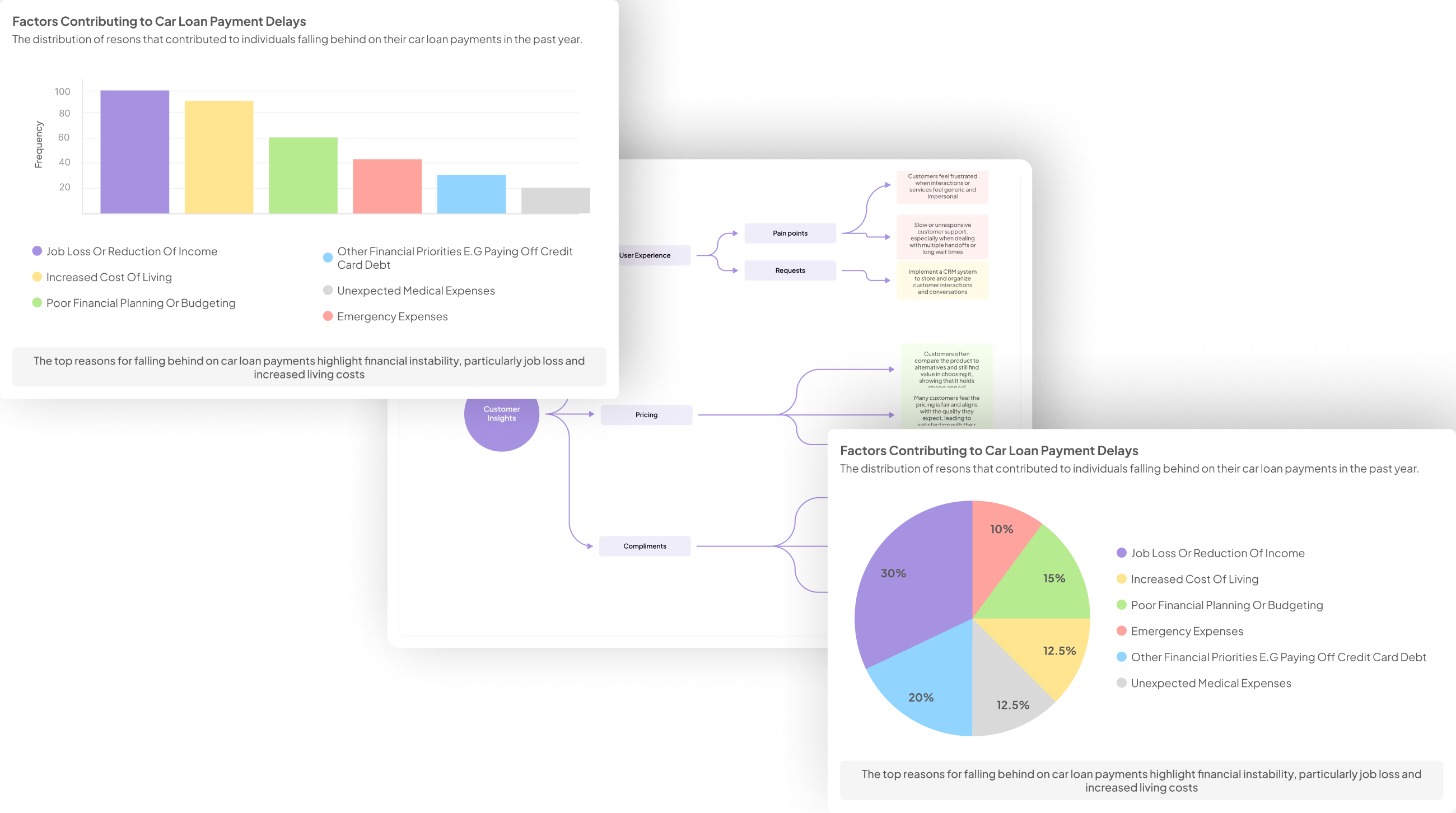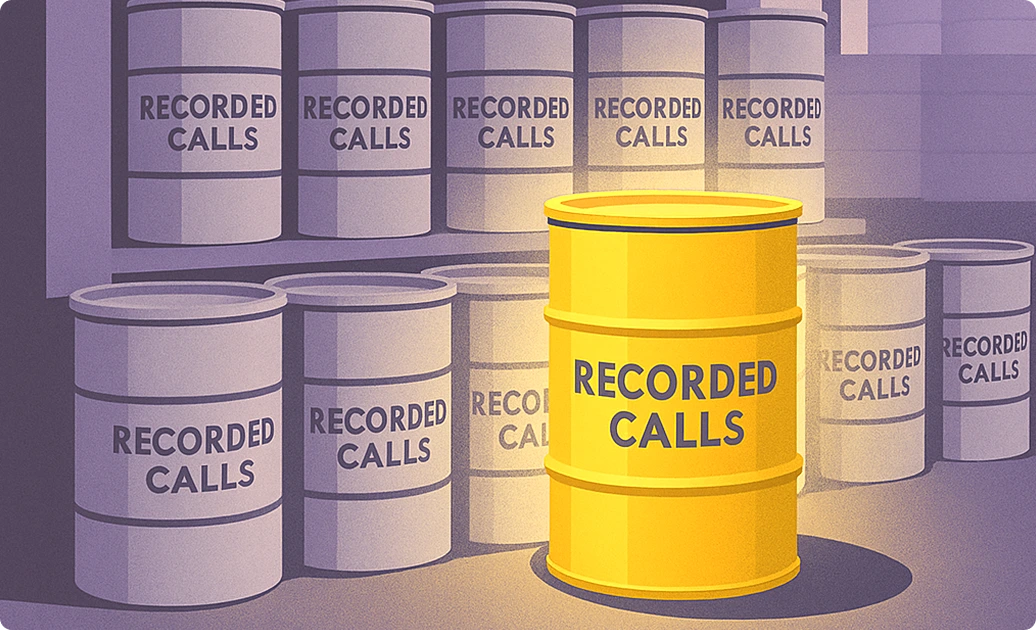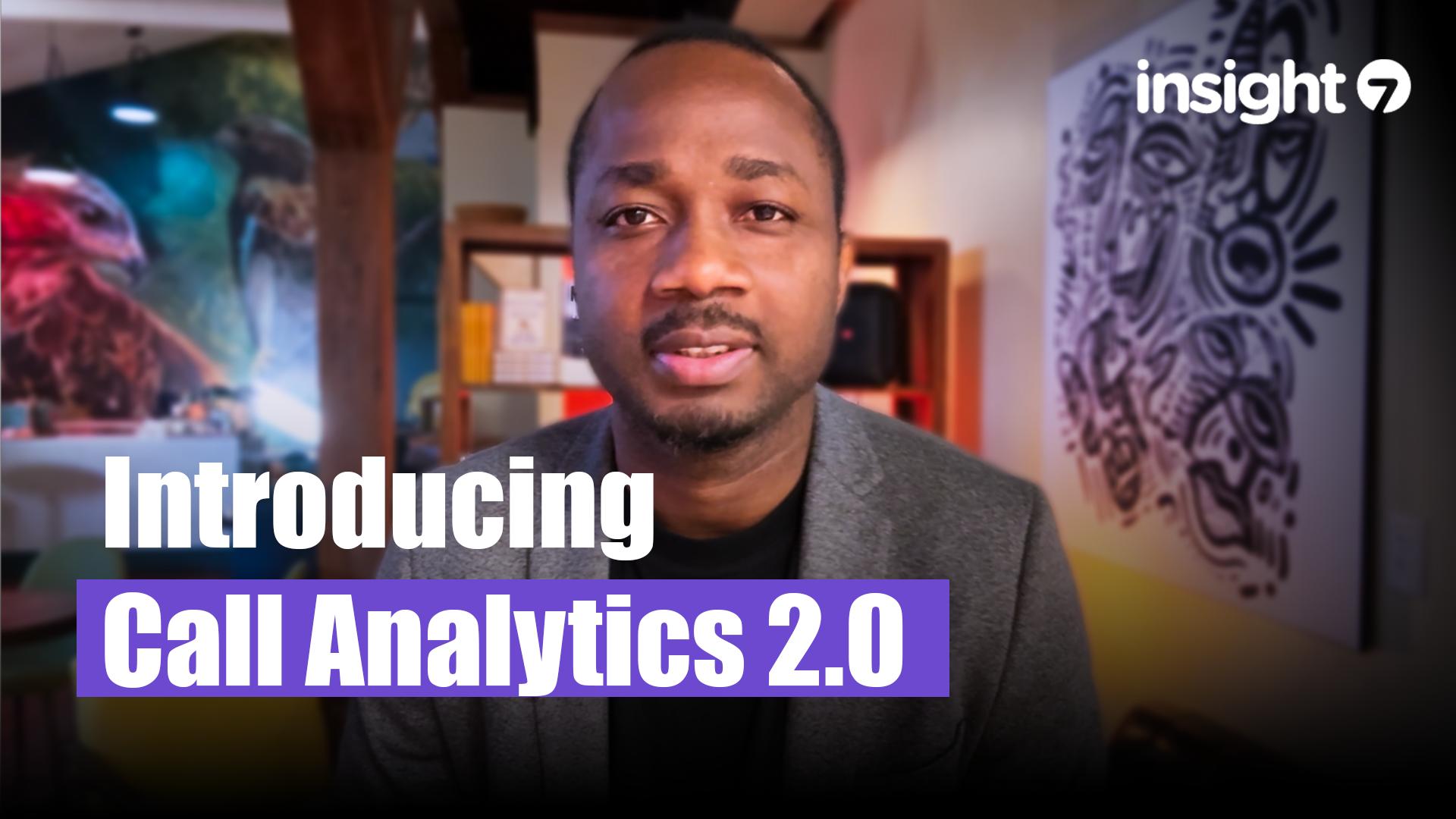How to generate visualizations from conversations
-
Bella Williams
- 10 min read
In a world increasingly driven by data, recognizing the value of conversations is paramount. Conversations, whether text, voice, or through chat interfaces, carry rich insights waiting to be unveiled. The concept of Conversational Data Visualization allows us to transform these verbal exchanges into meaningful visual formats, making complex information accessible and engaging. This process not only supports informed decision-making but also enhances collaboration across teams by presenting insights in an intuitive manner.
As we delve into this exploration, we will uncover how to effectively generate visualizations from conversations. By examining various techniques and tools, we aim to equip you with the knowledge needed to harness the power of conversation data effectively. Join us on this journey to illuminate the significant insights buried within everyday dialogues and discover how they can inform your strategies.
Generate visualizations from your qualitative data. At Scale.

The Core Concepts of Conversational Data Visualization
Conversational Data Visualization fundamentally transforms how we interact with unstructured data derived from conversations. It captures insights from various dialogue forms, including text, voice, and chat interactions. Understanding the essence of this concept is crucial as it empowers organizations to extract patterns and trends from complex conversational data effectively. By visualizing these insights, stakeholders can better grasp customer sentiments, pain points, and preferences.
The primary components of Conversational Data Visualization include data collection, analysis, and representation. First, collect data from diverse conversational sources and prepare it for visualization. Next, employ various techniques to visualize this information—such as graphs, charts, and dashboards—to highlight recurring themes and key insights. Finally, the representation of data not only makes it easier to comprehend but also enhances decision-making processes by providing a clear overview of critical conversational trends. Through these concepts, organizations can drive meaningful actions based on comprehensive analyses of conversational data.
Understanding Conversational Data
Conversational data is a rich source of insights derived from various communication forms, such as voice calls, chat messages, and even chatbot interactions. Understanding this type of data is crucial to extracting actionable information that guides decision-making processes. The significance of conversational data lies not only in its ability to reflect customer sentiments but also in its potential to inform service improvements and product offerings.
Different kinds of conversations can be analyzed, including customer service interactions, sales calls, and feedback sessions. Each type provides unique insights into customer behavior and preferences. For instance, sales conversations can reveal common objections or questions customers have, which is essential for training and refining sales techniques. By grasping the nuances of conversational data, organizations can develop effective conversational data visualization strategies, turning complex dialogues into easy-to-digest formats that enhance understanding and decision-making.
- Defining Conversational Data: What it is and why it matters
Conversational data refers to the information gathered from interactions, often characterized by dialogues between individuals or between humans and machines. This data encompasses various formats, including voice calls, chat logs, or transcripts from digital conversations. Understanding conversational data is vital because it offers insights into customer behavior, preferences, and areas for improvement in products or services.
The ability to visualize conversational data is particularly important for organizations aiming to enhance their communication strategies. By converting raw dialogues into visual representations, teams can identify key themes, trends, and pain points in customer interactions. This process not only assists in making data-driven decisions but also enhances user experience. Ultimately, recognizing the significance of conversational data empowers businesses to adopt a more consultative and customer-focused approach, facilitating a deeper connection with their audience.
- Types of Conversations to Analyze: Text, Voice, Chatbots, and More
Conversations come in various forms, each offering unique insights that can be transformed into valuable visualizations. When analyzing conversational data, it is crucial to recognize and differentiate between text, voice, and chatbot interactions. Each type of conversation provides a distinct set of data points that can enhance understanding and decision-making processes.
Text conversations, including emails and chat messages, are rich in explicit language patterns and user sentiments. Voice conversations, from customer service calls to informal chats, capture tone, emotion, and subtleties that text might miss. Chatbots represent automated interactions that deliver consistent data, often revealing user behavior and preferences. Analyzing these varied types allows organizations to draw comprehensive insights through Conversational Data Visualization, highlighting trends, patterns, and areas for improvement in customer engagement and service efficacy. By embracing this multi-faceted approach, businesses can effectively convert complex conversational data into actionable visual insights.
Techniques in Conversational Data Visualization
Conversational Data Visualization is an innovative approach that transforms dialogue into compelling visual representations. By unearthing patterns and ideas within spoken or written communication, organizations can glean actionable insights that drive decision-making. Various techniques can help extract meaning from conversations, such as thematic analysis, sentiment mapping, and keyword extraction. Each of these methods serves to illuminate different aspects of the dialogue, enabling users to better understand the nuances of customer feedback.
In this context, a few essential techniques emerge for effective visualization. First, thematic analysis involves categorizing conversations into common themes, allowing for better recognition of prevalent issues or requests. Second, sentiment mapping visually represents the emotional tone of the conversation, highlighting positive and negative sentiments and their frequencies. Third, keyword extraction summarizes frequent terms used in discussions, providing an analytical snapshot of key topics. By implementing these techniques, organizations can effectively communicate insights derived from their conversational data.
Evaluate Performance on Customer Calls for Quality Assurance.
- From Text to Visual: Key Visualization Approaches
The transformation from text to visual representation is a crucial phase in Conversational Data Visualization. Various approaches exist that leverage data from conversations to create impactful visuals. First, qualitative methods allow users to derive insights by categorizing comments or feedback—typically positive or negative. This technique aids in quickly identifying patterns and sentiments, which are visually represented in pie charts or bar graphs for easier comprehension.
Second, quantitative methods offer a more data-driven perspective. By analyzing numerical data derived from conversations, such as sentiment scores or frequency of specific keywords, visualizations can represent these metrics over time trends, enhancing the understanding of user emotions and behaviors. Third, advanced techniques involve natural language processing to extract themes emerging from dialogues. These themes can then be visualized through interactive dashboards, enabling deeper exploration of nuanced conversations. Each approach not only aids in digesting data but also supports informed decision-making based on visualized insights.
- Choosing the Right Visualization for Your Data
Selecting the appropriate visualization for your data is essential in making complex information digestible and insightful. Different visualization techniques serve unique purposes, so understanding your data type and audience will guide your choice. For instance, if you want to identify patterns or trends in customer conversations, a line graph can effectively display changes over time. Alternatively, bar charts or pie charts can showcase categorical data, such as customer sentiment, allowing for quick insights.
Think about the story you want to convey with your visualizations. Simple visuals can often communicate ideas more clearly than intricate ones. Furthermore, consider the audience's familiarity with various visualization forms. For Conversational Data Visualization, ensuring the visuals resonate with your audience is crucial for comprehension. By aligning your visualization choice with the message you wish to communicate, you can enhance understanding and effectively drive decisions based on the insights gleaned from conversations.
Steps to Generate Visualizations from Conversations
To generate visualizations from conversations effectively, one must follow several essential steps. The first step involves gathering and preparing your conversational data. This includes transcribing audio recordings into text and ensuring the data is clean and structured for analysis. Without clear, organized data, the accuracy of the visualizations will be compromised.
The next step is selecting and utilizing the appropriate tools for visualization. Options like Tableau, Google Data Studio, or even custom solutions such as D3.js allow you to create engaging visual representations of your data. When using these tools, focus on the type of insights you want to extract from your conversations; whether it’s identifying trends, understanding customer sentiments, or discovering pain points. A structured approach ensures that your visualizations not only present data but also tell a compelling story that resonates with your audience.
Step 1: Data Collection and Preparation
To begin the process of generating visualizations from conversations, the first step involves data collection and preparation. This crucial phase sets the foundation for effective Conversational Data Visualization. Start by capturing relevant conversational data from various sources, such as phone calls, chat sessions, and customer emails. Ensure that you gather diverse conversations to gain a well-rounded understanding of customer sentiments and behaviors.
Once you have collected the data, cleaning and structuring it is essential for obtaining meaningful insights. At this stage, remove any irrelevant content, errors, or inconsistencies, ensuring the data is accurate and organized. Structuring the data makes it easier to analyze and visualize later, allowing you to draw valuable conclusions. In this way, effective data collection and preparation empower you to create impactful visualizations that highlight key trends and insights.
- Techniques for Capturing Conversational Data
To effectively capture conversational data, it's essential to follow specific techniques that ensure accuracy and relevance. The first step involves transcription, where recordings of conversations are converted into text. This process allows for easier analysis and extraction of key insights. Next, organizing the data into a structured library can facilitate more efficient searching and referencing of information. A good software solution enables users to upload multiple files at once, streamlining the initial data processing steps.
Once the data is collected, employing various analysis techniques can further enhance understanding. Techniques such as keyword extraction, sentiment analysis, and thematic categorization can illuminate trends and patterns within the conversations. Additionally, tools that allow for the visual representation of these insights help stakeholders grasp complex topics quickly. By meticulously capturing and analyzing conversational data, businesses can transform these insights into actionable strategies, promoting better decision-making and customer engagement.
- Cleaning & Structuring Conversational Data for Visualization
Cleaning and structuring conversational data is vital for effective visualization. The first step involves identifying and removing noise from the data. This noise could mean extraneous words, filler phrases, or irrelevant context that dilutes the core information from conversations. Once this data is cleansed, it can be structured into formats conducive to analysis, such as tables or matrices. This structured format allows for easier pattern recognition and trend analysis across conversations.
Next, organizing the cleaned data into thematic categories enhances insights. For instance, labeling segments by topics or sentiment can provide clearer visual narratives when plotted. Visualization tools can then turn this structured data into impactful graphics, revealing trends that may otherwise go unnoticed. Through diligent cleaning and careful structuring of conversational data, one can significantly enhance the usefulness of conversational data visualization, leading to deeper insights and more informed decision-making in various contexts.
Step 2: Tooling and Techniques
In Step 2: Tooling and Techniques, we delve into essential tools for effective Conversational Data Visualization. Selecting the right tools can significantly enhance the clarity and impact of your visualizations. Consider integrating platforms like insight7, which provides robust data analysis, or Tableau, known for its intuitive dashboards. Power BI offers seamless integration with Microsoft products, while D3.js allows for custom visualizations, giving you creative flexibility. Google Data Studio serves as a valuable resource for real-time reporting and visualization.
Once you’ve identified suitable tools, mastery over visualization techniques is equally crucial. Understanding charts, graphs, and heat maps can help translate complex conversational data into meaningful insights. Start by determining what story your data needs to tell. Then, choose visualization methods that align with your objectives, such as trend analysis or comparative assessments. Implementing these tools and techniques effectively will empower you to generate impactful visualizations that resonate with your audience.
- Choosing the Right Tools for Visualization: An Overview
Selecting the appropriate tools for visualizing conversational data is crucial for creating impactful representations. The journey begins by understanding your specific needs and the types of conversations you're analyzing, be it voice recordings, chat logs, or text-based dialogues. Each tool available offers unique functionalities that can enhance your analysis.
Several options stand out in the realm of visualization. For instance, Tableau offers extensive visualization capabilities and easy integration, making it a favorite among data analysts. Similarly, Power BI empowers users with robust analytics features tailored for business insights. D3.js provides flexibility for custom visualizations, while Google Data Studio emphasizes user-friendliness and real-time collaboration. Lastly, platforms like insight7 focus on extracting actionable insights from conversations, streamlining the visualization process. Choosing the right tool ensures that your conversational data visualization efforts yield meaningful and understandable narratives.
- insight7
To tap into the power of Conversational Data Visualization, it’s essential to grasp the significance of where conversational insights originate. Conversations offer rich data that can uncover user sentiment, trends, and specific needs. Selecting the right format for visualization can amplify these insights, transforming raw conversations into compelling narratives that resonate with stakeholders.
Understanding the types of information gathered from various conversational platforms is crucial. This encompasses text transcripts, voice interactions, or chatbot exchanges. Each format presents unique visualization opportunities that can guide decision-making processes. By thoughtfully analyzing these interactions, companies can derive actionable insights that not only enhance customer relations but also drive strategic initiatives. Hence, embracing effective visualization techniques becomes an invaluable part of turning conversations into insightful data stories.
- Tableau
Tableau serves as a powerful tool for creating engaging visualizations from raw conversational data. With its intuitive interface, users can easily transform complex datasets into meaningful graphics. This capability is crucial when analyzing trends and patterns from conversations, whether they occur in interviews, customer support interactions, or surveys.
To effectively harness Tableau for conversational data visualization, follow these key steps. First, gather and prepare your data. This means cleaning transcripts and organizing them into a structured format suitable for Tableau. Next, utilize Tableau’s diverse visualization options to represent data effectively. Charts, graphs, and dashboards can illustrate insights like customer pain points and themes emerging from your conversations. Lastly, share your findings through reports generated in Tableau to facilitate informed decision-making. By employing Tableau, you can uncover actionable insights, ensuring that the voice of the customer is accurately represented in your visual storytelling.
- Power BI
Power BI is a powerful tool for turning raw conversational data into insightful visualizations. With its intuitive interface, users can easily import data from various sources, enabling them to analyze conversations critically. By utilizing features such as dashboards and reports, teams can transform dialogue into visual narratives that reveal trends, patterns, and insights. This approach enhances the understanding of customer interactions and informs strategic decisions.
In the realm of Conversational Data Visualization, Power BI excels in presenting complex datasets through meaningful graphics. Users can explore themes and key insights, helping organizations pinpoint areas of interest, such as customer pain points or feedback trends. The ability to create customized charts, graphs, and tables makes it easier to communicate findings effectively. Ultimately, Power BI not only facilitates data interpretation but also empowers users to harness conversational insights, driving actionable outcomes.
- D3.js
D3.js stands out as a powerful library for creating visualizations rooted in conversational data. With its extensive capabilities, it allows developers to manipulate documents based on data-driven insights. This is particularly beneficial for transforming textual and vocal conversation data into dynamic graphics that engage and inform.
One of the key advantages of using D3.js for Conversational Data Visualization is its flexibility in representation. Users can create various types of charts, graphs, and interactive elements to elucidate patterns, trends, and key themes from discussions. For instance, examining positive and negative feedback through visually appealing bar charts or scatter plots enables stakeholders to discern insights quickly. Furthermore, D3.js facilitates real-time updates, allowing visuals to evolve as new conversational datasets are analyzed. This adaptability empowers organizations to visualize customer sentiments effectively and refine their strategies for improved engagement.
In summary, D3.js is instrumental in harnessing the power of data visualization. Its ability to represent complex conversational insights in a readily digestible format makes it a valuable tool for any organization seeking to understand their audience better.
- Google Data Studio
Google Data Studio serves as a powerful tool for creating dynamic visualizations derived from conversational data. Utilizing its intuitive interface, users can import various data sources, including transcripts from recorded conversations. By transforming textual inputs into engaging visual formats, it helps extract essential insights easily. This process begins by uploading your data into designated projects where you can categorize information for more accessible analysis.
The visualization capabilities enable you to highlight trends and sentiment across conversations. Users can create custom dashboards that summarize feedback and identify recurring themes. Such functionalities make Google Data Studio not just user-friendly, but also essential for enhancing decision-making processes. By harnessing these features, businesses can turn raw conversation data into actionable insights, ultimately aiding in marketing and product development strategies.
Conclusion: The Impact of Conversational Data Visualization
Conversational Data Visualization has transformed the way businesses interpret and interact with their data. By translating conversations into visual formats, organizations gain invaluable insights that drive decision-making and strategic planning. This method enables stakeholders to identify patterns, extract sentiments, and assess feedback efficiently, all while enhancing the clarity of complex datasets.
As teams leverage these visualizations, they foster improved collaboration and communication. The impact of conversational analysis extends beyond mere numbers, offering a narrative that guides action. Embracing this innovative approach not only streamlines data interpretation but also cultivates a deeper understanding of customer needs and market trends, making it essential for contemporary business success.







